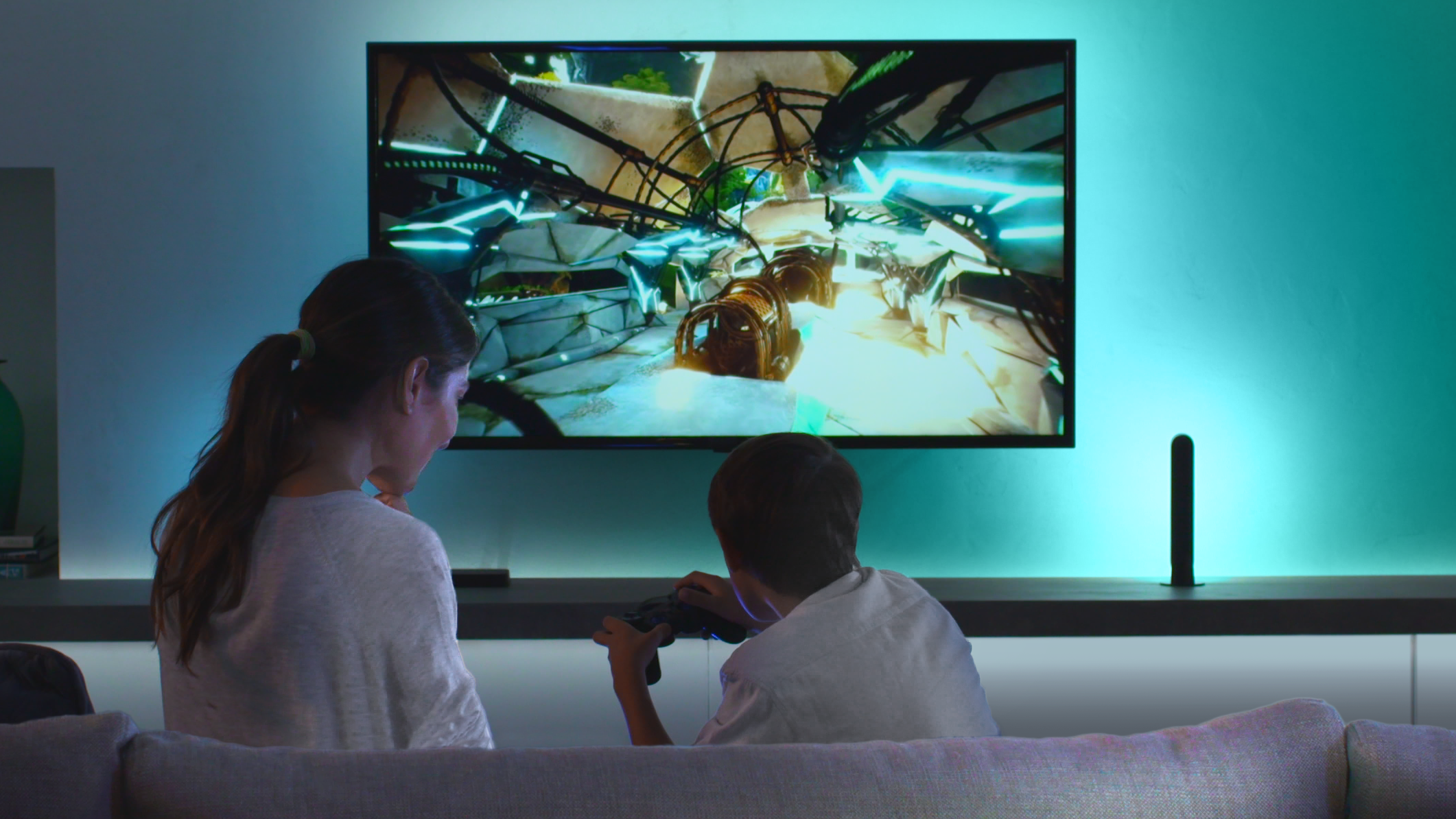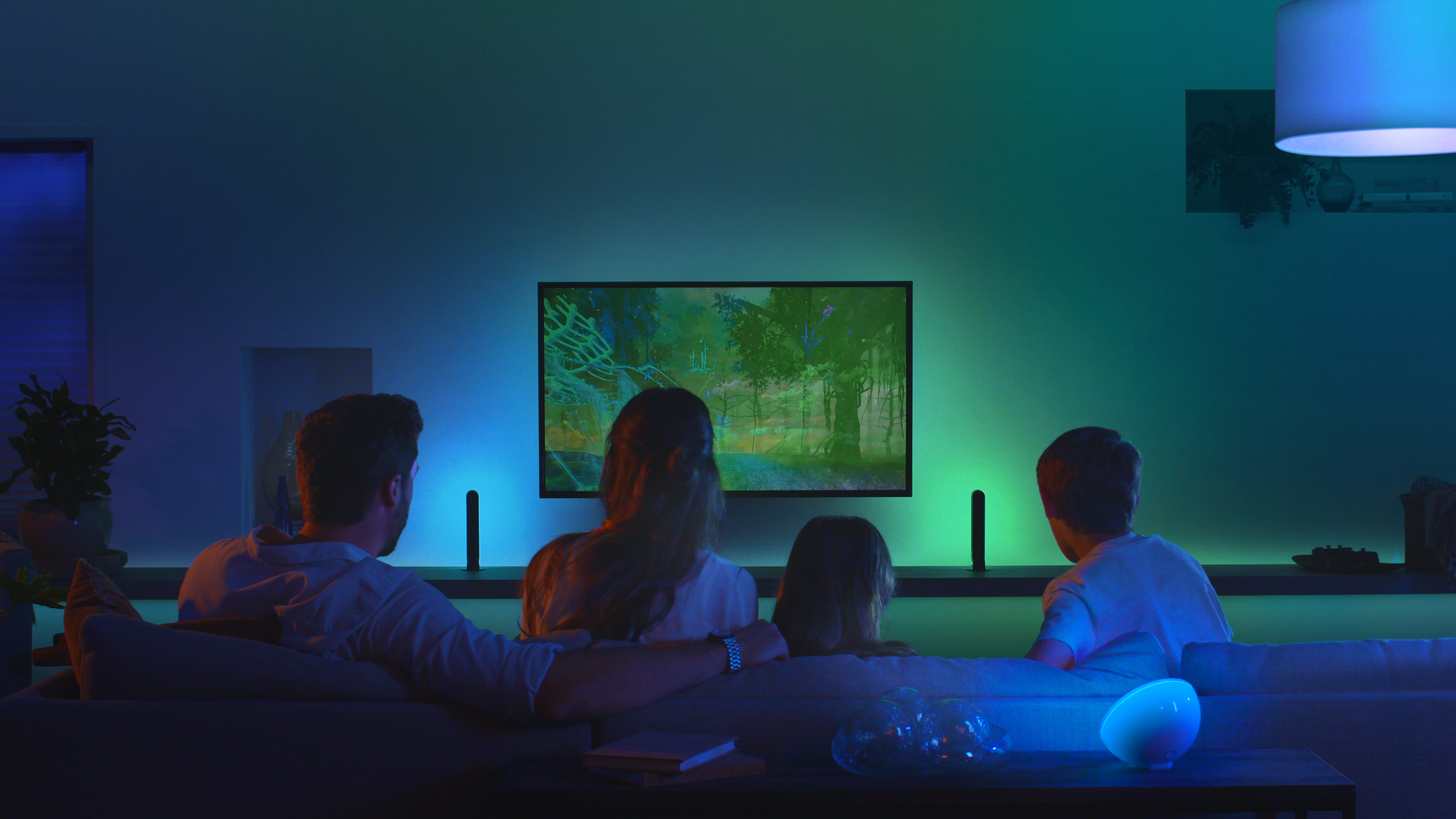I think the Philips Hue Play Sync Box is the perfect PS5 and Xbox Series X accessory
PS5 and Xbox Series X owners should really consider picking up a Philips Hue Play Sync Box – here's why


When my friend told me she'd bought a Hue Play HDMI Sync Box for her PS5, I scoffed. As much as I like Philips Ambilight TVs such as their new OLED models, for me the cost of adding a sync box and a gradient light strip seemed far too much for some flicky lights around the edge of the screen. But then one evening the combination of a really good Hue deal, boredom and poor impulse control saw me hitting the order button on a sync box of my own. And as much as I hate to admit it, it's brilliant.
I reckon if you have the space around your TV, this is a fantastic upgrade for the PS5 or Xbox Series X in particular. That's because while the box will take an HDMI from any source, the current generation of the Play Sync box also supports some HDMI 2.1 features including 120Hz refresh rates (at 1440p) so you're getting full speed from your next-gen console. If you've ever had a breakout box take away a prized feature you'll know how important it is. I'm still annoyed at my first-generation PSVR over it.
Here's how I've hooked it up.

Why Hue Play Sync means more gripping gaming
I already have my Xbox and PS5 going through an AV receiver – the Sony STR-DH790, our budget pick of the best AV receivers – and I already have Hue lights and a Hue Bridge. So connecting it all up was really simple: one HDMI cable from the receiver into the sync box, and one cable from that into my Samsung TV's ARC HDMI socket. Installing the lightstrip on the back of my TV took five minutes, and I was able to plug it into the same power unit as the sync box so I only needed a single plug socket. Then it was just a matter of getting the Hue app to say hello and telling it what lights to include in my new Entertainment Area.
My TV sits between two bookshelves, and there are small Hue lights atop each one. I initially included them in my entertainment area, but that was a mistake: too much light around the TV, even at the lowest brightness levels. By leaving the smart lighting to the lightstrip the results were much better, and a lot more subtle when watching TV.
In games, it's a hoot. There's a little bit of lag when you're moving around in very bright games like Horizon Forbidden West, but you get used to it quickly – and when you go into the water and your room turns green or you enter a dark space and your flashlight splashes your walls with colour you'll laugh out loud. And you'll laugh even more in arcade games: lightning storms and explosions fill the room. It's tremendous fun.
I'm still messing around with it – at first it was a bit much for TV until I dialled down the intensity and cut the brightness too – but I'm having a lot of fun already. It's very much like surround sound: you can manage fine without it, but having it really does add something valuable.
Get all the latest news, reviews, deals and buying guides on gorgeous tech, home and active products from the T3 experts
Writer, musician and broadcaster Carrie Marshall has been covering technology since 1998 and is particularly interested in how tech can help us live our best lives. Her CV is a who’s who of magazines, newspapers, websites and radio programmes ranging from T3, Techradar and MacFormat to the BBC, Sunday Post and People’s Friend. Carrie has written more than a dozen books, ghost-wrote two more and co-wrote seven more books and a Radio 2 documentary series; her memoir, Carrie Kills A Man, was shortlisted for the British Book Awards. When she’s not scribbling, Carrie is the singer in Glaswegian rock band Unquiet Mind (unquietmindmusic).
